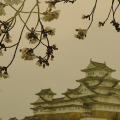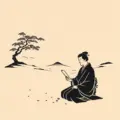Juxtaposition is a powerful poetic technique that involves placing two contrasting ideas, words, phrases or images side-by-side in a poem. This clash of contrasts creates tension and highlights the differences between the juxtaposed elements. Used skillfully, juxtaposition can add depth and resonance to free verse poetry.
Contents
What Is Juxtaposition?
Juxtaposition is derived from the Latin words ‘juxta’ meaning side-by-side and ‘positio’ meaning place. As a literary device, it involves positioning two contrasting concepts, words, phrases, images or ideas side-by-side in a poem to highlight their differences and create an interesting effect.
The two juxtaposed elements may seem dissimilar or even contradictory on the surface. But when placed next to each other, they can often reveal surprising connections, contrasts and insights.
Why Use Juxtaposition In Poetry?
There are several reasons why juxtaposition can be an effective technique in free verse poetry:
- It creates tension and drama by highlighting contrasts between elements
- It can reveal unexpected similarities and connections
- It provokes deeper thought from the reader in resolving the juxtaposition
- It makes the reader notice new aspects of familiar things when contrasted against something very different
Juxtaposition often provokes rich interpretations and debate over the meaning behind the deliberate contrasts. So it tends to lend a sense of mystery, intrigue and depth to free verse poems.
What are the Different Types of Juxtaposition?
There are several major types of juxtaposition used in poetry:
Contrasting Ideas
This involves positioning contrasting abstract concepts or themes side-by-side, such as ‘good and evil’, ‘life and death’, ‘light and dark’.
For example, John Milton’s poem ‘Paradise Lost’ famously juxtaposes the contrasting ideas of disobedience and salvation, sin and redemption.
Contrasting Imagery
This type of juxtaposition places contrasting vivid images next to each other. For example, William Blake’s poem ‘The Tyger’ juxtaposes the fierce, fiery imagery of the tiger against the pastoral, peaceful imagery of the lamb.
Contradictory Phrases
Phrases with contradictory meanings can be positioned together to provoke the reader into reconciling their clash of meaning. For example, ‘living death’, ‘deafening silence’, ‘bitter joy’.
Irony
By placing two statements side-by-side, irony can arise from the gap between what is expected to happen and what actually occurs.
Oxymorons
Extreme contrasts can be combined in oxymorons(typically idioms) like ‘awfully good’, ‘deafening silence’, ‘original copies’ to create semantic tension.
Juxtaposition vs Other Poetic Techniques
It’s important to understand how juxtaposition differs from other poetic techniques that also involve contrasts:
Paradox – A statement that seems to contradict itself but may be true. Juxtaposition sets up contradictions without resolution.
Antithesis – Direct opposition through parallel structure (not my words, but yours). Juxtaposition simply sets contrasts side-by-side.
How to Use Juxtaposition Effectively:
Here are some tips for using juxtaposition effectively in your free verse poetry:
Choose Contrasting Elements
Select two elements that seem sharply contradictory on the surface – the more tension between them, the more potential for irony and revelation their combination creates.
Place Them Side-By-Side
Position them directly next to each other in consecutive lines or phrases so their contrasts and connections are highlighted. Allow little space between them.
Create Tension and Mystery
Use vivid and emotive language when describing the juxtaposed elements to create drama, intrigue and tension. Don’t resolve the contradiction completely – leave some mystery.
Add Interpretative Depth
The reader has to work harder to resolve the deliberate juxtapositions you introduce. This provokes deeper analysis and interpretation, lending interpretative richness.
Reveal Unexpected Insights
Allow your juxtapositions to bring together seemingly disconnected elements to reveal new insights about them that may not have emerged without their deliberate positioning side-by-side.
Mixing Different Types of Juxtaposition
You can combine multiple types of juxtaposition in one poem for extra impact:
- Contrasting ideas with contradictory phrases
- Irony with oxymorons
- Contrasting images with antithesis
Weaving together different types creates new tensions and insights from the overlaps.
Examples of Juxtaposition In Poetry
Here are some great examples of skilful juxtaposition from famous free verse poems:
The Tyger (William Blake)
“Tyger Tyger, burning bright, In the forests of the night; What immortal hand or eye, Could frame thy fearful symmetry?”
This verse juxtaposes the fierce, blazing Tyger against the dark, brooding ‘forests of the night’ to create the vivid imagery of the beast bursting out of the woods like a ball of flame. It also helps that it rhymes – unfortunately, the rhyme of bright and night, or light and night, or sight and night is a rhyme that every middling poet will try at some point for the next million years and, in most poems, immediately turns me off; no matter how good the poet in question.
Ozymandias (Percy Bysshe Shelley)
“My name is Ozymandias, King of Kings; Look on my Works, ye Mighty, and despair!”
Nothing beside remains. Round the decay Of that colossal Wreck, boundless and bare”
Shelley juxtaposes the arrogant grandiosity of the statue inscription with the broken, crumbled ruins of the statue itself. This irony reveals the tyrannical ruler’s hubris, in addition to reinforcing the main “purpose” of the poem – to show that everything is temporary and ephemeral.
What I find particularly interesting about this poem, and it’s something that many people have covered before me, is the question of who, exactly, is being ironic here. Is it the poet? Or, perhaps, Ozymandias himself is making the point – knowing that nothing will remain of his works in the future? It’s an interesting question and one that – fortunately – I haven’t found a convincing answer to yet.
The Second Coming (W.B. Yeats)
“The best lack all conviction, while the worst Are full of passionate intensity.”
Yeats uses juxtaposition here to contrast the apathy of the ‘best’ with the passionate extremism of the ‘worst’.
Mastering the deliberate positioning of contrasting elements can lend unique depth and intrigue to your free verse poetry. Experiment with combining disconnected words, ideas and images together in new ways to spark interpretative richness and elegance.
Juxtaposition In Imagist Poetry
Juxtaposition was a technique often used by Imagist poets to evoke vivid sensory images. For example, Ezra Pound’s poem In a Station of the Metro:
“The apparition of these faces in the crowd; Petals on a wet, black bough.”
Pound juxtaposes the ghostly faces of strangers with the delicate petals of flowers – fusing urban alienation and natural beauty.
Using Juxtaposition Subtly in Poetry:
One of the main complaints I have with juxtaposition – and this could be entirely me – is that it is very, very difficult to use in a subtle or interesting way; at least more interestingly than the brute force of Ozymandias’ juxtaposition.
By its very nature, juxtaposition is glaring – it is oppositional forces (or near opposites) clashing together to create something. A sense of unease or unheimlich. A shock, a potency – something that kicks our senses into gear.
By definition then, you shouldn’t be able to use the actual juxtaposition in any subtle way. I’ve seen some other people online refer to prophetic fallacy as a kind of subtle juxtaposition, particularly if everything else about the scene is positive or negative (as juxtaposed against a storm or bright, sunny weather).
While brash, obvious lines work, and can be used to great effect (even in the case of Ozymandias’ obvious juxtaposition, there is still a hint of mystery there), I typically like a little more subtlety and depth in the poems I enjoy. It’s for this reason that I rarely use juxtaposition in terms of a scene – limiting it to the occasional turn of phrase within a line, or split across multiple lines.
I don’t really share my poetry here – that’s not what this site is for, and it would be fairly vain of me to try and turn this (hopefully) informative platform into a venue for my own random lines.
Saying that, I prefer my juxtaposition to be split apart – broken between lines or stanza. It is difficult to do well, as I’ve found, and if you stretch the juxtaposition too far, it isn’t always immediately obvious that it is there at all. I think that’s how I prefer my juxtaposition in poetry – subtle enough that you need to look at the poem as a whole, not just a line or two, to really understand how the different parts of the work juxtapose each other.
I think there’s a lot more to say on the use of juxtaposition in poetry – and it’s certainly something I’d like to go into a little further. But, similarly, I don’t want to turn this article into my own endless self-debate.
- Glossary of Japanese Poetry Terms - 26 February 2025
- What is Waka Poetry? - 23 May 2024
- How to Identify the Kigo in a Haiku: - 22 March 2024





